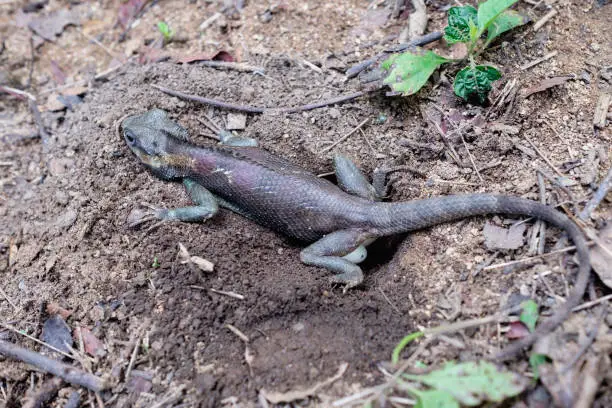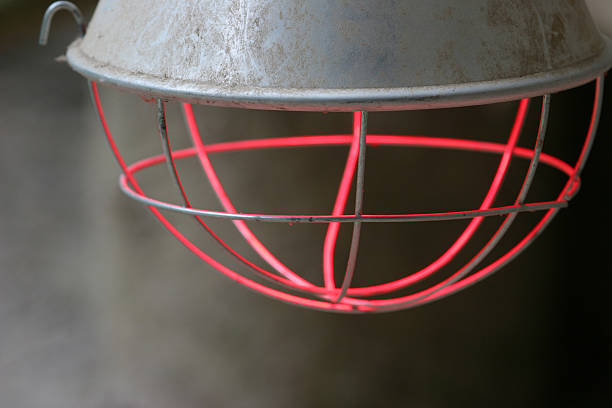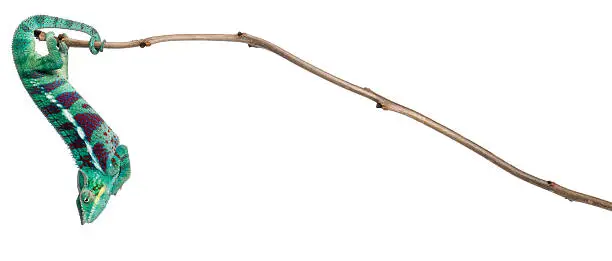Do Chameleons Hang Upside Down? Is it normal for chameleons to hang upside down? Yes, a chameleon hanging upside down is normal.
Chameleons can be unique lizards with many interesting behaviours. They are fascinating creatures because they can do some of the most incredible feats of coordination and control of their body. While some of these behaviours are pretty simple to understand, they can also display many behaviours that you may not even know about! Some of these behaviours are important communication channels that will inform an experienced keeper on the chameleon’s well-being or lack of it.
If you have observed your chameleon hanging on top of the cage and wondered if it is a chameleon trying to escape, keep reading. Understanding your chameleon’s position can help you identify whether you need to make any changes or whether your chameleon is just being playful.
In this article
A Young Chameleon Hanging Upside Down is Okay.
Do baby chameleons sleep upside down?

Baby chameleons are naturally curious and exploratory. As your chameleon grows, he’ll likely start getting more and more accustomed to his new environment. This could explain why young chameleons will more likely be found hanging upside down instead of adults.
It is normal to find your baby Chameleon hanging peacefully on top of their cage. Your chameleon will probably start hanging upside down a little less often as it gets older. You can also keep checking back as the chameleon grows to ensure the hang is still regular.
Therefore, the first thing to consider when evaluating why your chameleon is hanging upside down is their age.
Male Chameleon hanging upside down may be looking for a mate.
A male chameleon might climb the sides of the enclosure to try and find a mate. During the mating season, it is not uncommon to see a male chameleon on the screen of its enclosure. These are signs of a chameleon trying to escape to find a mate.
Below signs of male chameleons may be displayed to give you a hint that the mating season has come;
Signs that a male chameleon is ready to mate.
When male chameleons reach maturity, the below male chameleon mating behaviours may be observed;
- Their colours get brighter, more vibrant, and tend to the blue and red spectrum.
- The chameleon will get more restless and often on the move.
- The males will puff up their throats and bob their heads to display their strength and prowess to their mates.
- Species with horns will use their horns to fight their competitors for a mate. This may end up causing injuries.
- Sometimes the males will rub their bodies against the screen or cage in an attempt to escape. This, too, will result in bruises to the chameleons and a possible opening for infections.
Female Chameleon hanging upside down may be wanting to lay eggs.
Unlike male chameleons, female chameleons do not necessarily require to mate to lay eggs. The eggs will be laid but will not hatch since they will not have been fertilized. Therefore a lone female in an enclosure will still display this behaviour when looking to lay eggs.

Female chameleons of four to six months old may start to display egg-laying behaviour. A mature female chameleon hanging upside down could indicate that it is ready to lay eggs. Place an egg-laying bin in the cage to add a sense of security to a chameleon. They will then see their eggs safely deposited, so they know that they are in good hands.
Therefore, it is essential to know the sex of your chameleon to respond appropriately. Below are some of the general sexing tips for chameleons;
- Male chameleons will have a hemi-penal bulge at the bottom centre base of their tail, while the females won’t have it.
- The male chameleons will generally be longer and heavier than the female chameleons.
- While males will have brighter and distinct colours, the females will display more muted colours that generally blend into each other.
- Males will have more bumpy and rugged backs while females are generally even.
It is common to see a Chameleon hanging upside down when trying to absorb light.
Chameleons also tend to hang upside down near light sources to increase the amount of ultraviolet (UVB) light they absorb to help them survive. This is part of their instinct to thrive since chameleons can’t function optimally without a good source of UVB light.
Depending on the UVB source positioning in your chameleon enclosure, your chameleon may be observed hanging on top of the cage of the source is from above. If the UVB source is from the side, the chameleon will be on the screen.
Providing adequate light for your chameleon during daytime hours is essential. UVB is a type of light that has been shown to play a role in calcium absorption. Calcium is a nutrient that’s essential to many functions in the chameleon body.
Day/night cycles are great ways to help a chameleon feel more comfortable and secure in its habitat. While many factors play into this, adequate lighting is one of the most important.
Chameleon hanging upside down when feeling unsafe in the habitat is common.
You can help your chameleon feel secure by providing it with branches and vines that it can climb to feel as normal as possible. Branches also make the chameleons’ captivity space feel more natural than artificial.
When chameleons are placed in a habitat with open space and little to no hideouts or branches, they may choose to climb the sides of their enclosures and hang upside down. This is usually an indicator that the chameleon is feeling very insecure or at risk of being susceptible to predators.
Plants are used as natural camouflage for chameleons. They provide privacy and security and improve your chameleon’s mood and provide a tranquil environment. Not only that, but plants can lower your chameleon’s stress levels. You can enhance the chameleons’ overall health by adding plants to your home.
A Chameleon can be seen hanging upside down when temperatures are not correct.
Similar to UVB light, chameleons will also move closer to a source of heat if the temperature falls below the optimal level. In most times, the heat lamps are hung over the cages.

Chameleons change colour depending on the temperature. It’s a way for them to stay warm or cool as needed. If a chameleon starts to feel too cold, it’ll change to a darker colour to absorb more heat from its surrounding.
If a chameleon sits out in the sun too long, it will turn a lighter colour than its everyday shade to reflect heat away. They’ll also sit there with their mouths open wider to let cool air in, thus losing heat even faster.
When the enclosure gets too hot, your chameleon will most likely be at the bottom of the cage. This explains why the chameleon will be hanging out at the bottom of his cage.
Monitoring the temperature of your enclosure can be done by using a temperature monitor. You may want to keep a thermometer in the enclosure so you can catch the temperature anomalies in good time to avoid stressing out the chameleon.
Conclusion.
Many things can make chameleons start to hang upside down. There are some obvious causes for concern, and others are more difficult to determine. If you want to learn more about what’s going on, you’ll need to pay close attention to the chameleon.
If you understand why chameleons act the way they do, then it should be possible to figure out what’s wrong and make changes to accommodate them. With a bit of work, chameleons can become a lot happier.

